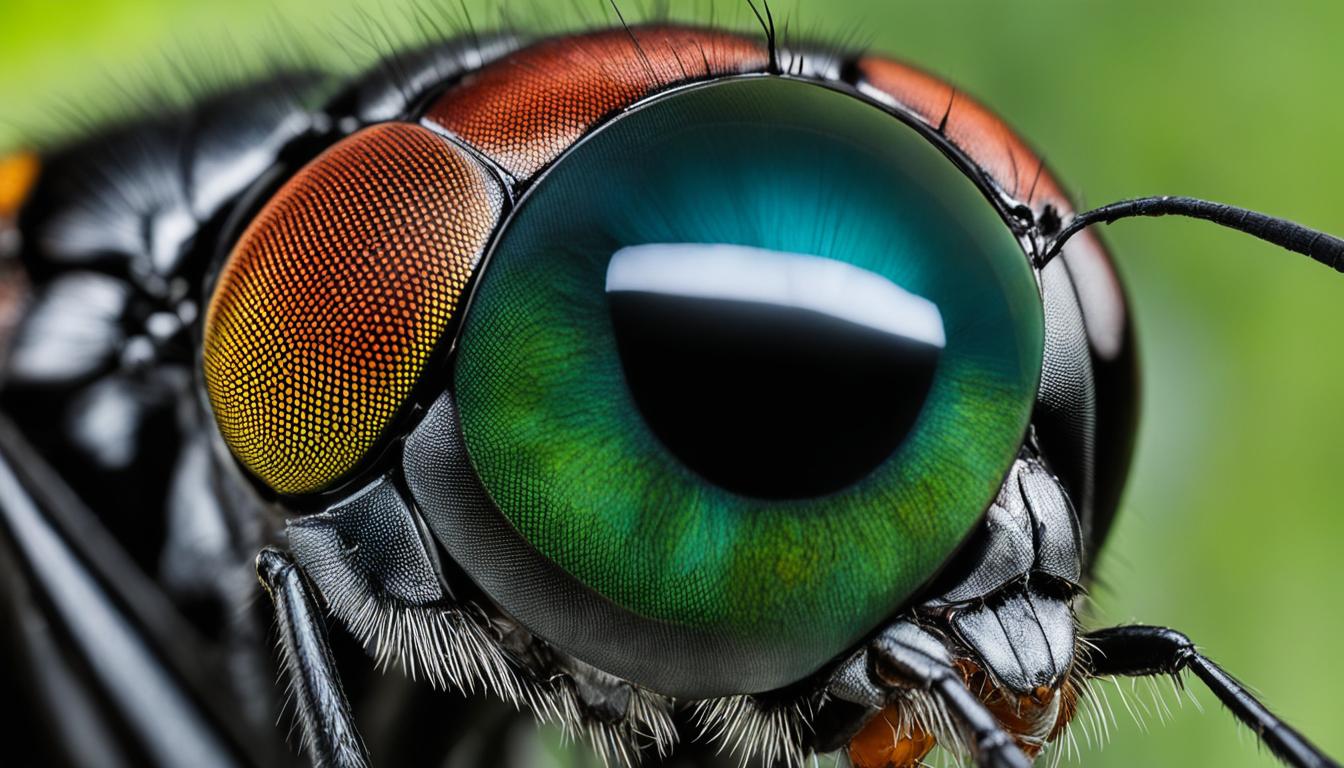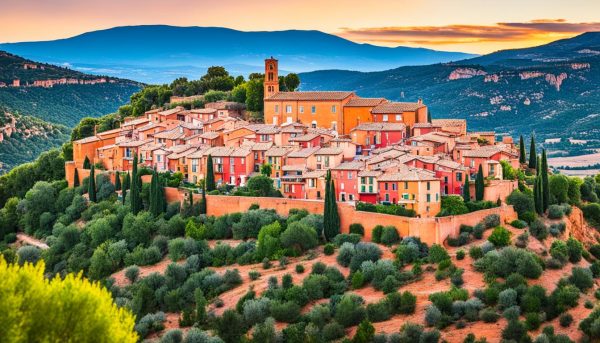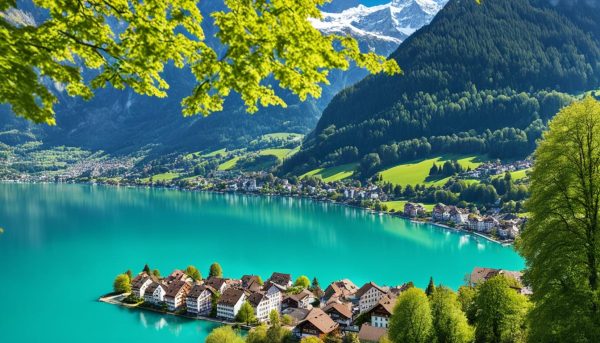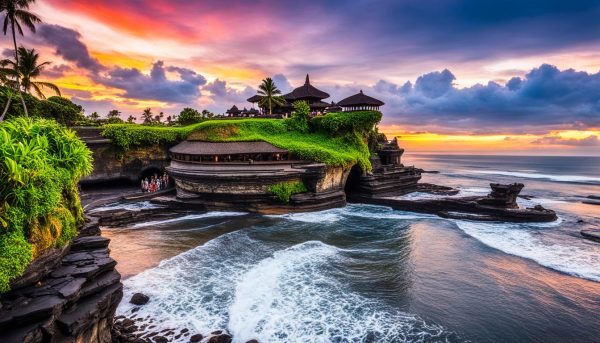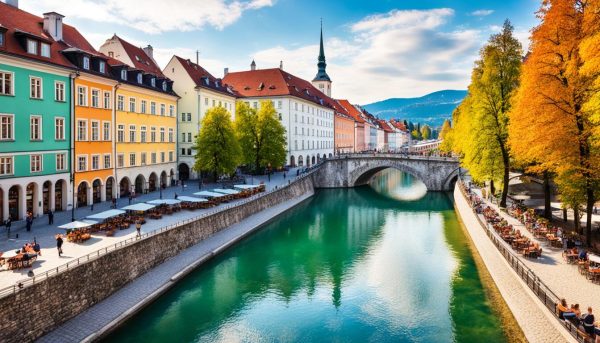Insect photography is a mesmerizing genre that allows us to explore the enchanting world of tiny creatures. With their vibrant colors and intricate structures, insects make captivating subjects for close-up photography. In this article, we will delve into the fascinating realm of insect photography and discover how to capture the magic of these small creatures.
Key Takeaways:
- Macro photography offers a unique and detailed perspective on insects.
- Close-up photography allows us to appreciate the stunning colors and intricate structures of insects.
- Capturing insects in their natural habitats requires the right equipment and techniques.
- A macro lens is essential for achieving sharp and detailed insect photographs.
- Patience and respect are key when approaching and photographing insects.
Best Time and Lighting for Insect Photography
When it comes to capturing the mesmerizing beauty of insects through your camera lens, the right time and lighting play a crucial role. Understanding the best time and ideal lighting conditions for insect photography can greatly enhance your images.
The best time for insect photography is in the early mornings when temperatures are low, and the insects are still asleep. This time allows you a longer window to capture stunning images without disturbing the delicate creatures. The calm and quiet morning atmosphere sets the stage for a peaceful and undisturbed photoshoot with insects.
In morning photography, the soft glow of the rising sun offers ideal lighting conditions for capturing the intricate details of insects. The early morning light is diffused, providing a gentle and flattering illumination that brings out the textures, patterns, and colors of your subjects. Additionally, during the morning hours, you may find dewdrops decorating the insects, adding an extra element of beauty to your macro shots.
While mornings are generally considered the best for insect photography, evening photography can also offer unique opportunities. In the late afternoon or evening, the low angle of the sun creates warm, golden light that can add a beautiful touch to your images. Insect behavior and activity can differ between mornings and evenings, so it’s worth exploring both options to capture a diverse range of shots.
“The best time and lighting for insect photography provide an ideal canvas to capture the essence and beauty of these fascinating creatures.”
Experiment with different times of the day and lighting conditions to discover the magical moments when insects come to life through your lens. Remember that each insect species may have its own preferred time of activity, so it’s essential to research and observe their habits to optimize your photography sessions.
| Morning Photography | Evening Photography |
|---|---|
| Low temperatures and undisturbed insects | Warm, golden light from the low sun angle |
| Soft and diffused morning light for capturing intricate details | Different insect behaviors and activities |
| Potential for dewdrops on insects | Varied lighting conditions for creative shots |
Respectful Techniques and Best Insects to Photograph
When it comes to insect photography, taking a respectful and ethical approach is crucial. Respecting the well-being of these delicate creatures ensures their welfare while capturing their beauty through the lens. Here are some techniques to practice and the best insect subjects to photograph:
1. Patience-Based Techniques
To ensure a respectful and mindful approach to insect photography, it’s important to refrain from freezing uncooperative insects to slow them down. This method can harm the insects and disrupt their natural behavior. Instead, adopt patience-based techniques that allow you to capture their true essence.
2. Early Morning Advantage
Choosing the right time to photograph insects plays a significant role in the success of your shots. In the early mornings, dragonflies, butterflies, and bees are often in a lethargic or cooled-down state. This state provides the perfect opportunity to photograph them without causing any distress.
3. Dragonflies: Masters of Flight
Dragonflies are incredible creatures known for their vibrant colors and unique flight patterns. They make excellent subjects for respectful insect photography due to their relatively slow movements and photogenic features. From capturing their intricate wings to their captivating eyes, dragonflies offer a world of photographic possibilities.
4. Butterflies: Elegance in Motion
Butterflies are renowned for their graceful flight and stunning patterns. Their gentle demeanor and frequent visits to flowers make them an ideal choice for respectful insect photography. With a patient and caring approach, you can capture the intricate details of their wings and showcase their vibrant colors.
5. Bees: Pollinators at Work
Bees play a vital role in our ecosystem as pollinators, and photographing them can highlight their importance and beauty. By using a respectful approach, you can capture bees as they collect nectar from flowers or in mid-flight, showcasing their energy and tireless work ethic.
Remember, practicing respect and care is essential in every aspect of insect photography. By adopting these techniques and focusing on dragonflies, butterflies, and bees, you can create stunning images while preserving the well-being of these remarkable creatures.
Equipment for Insect Photography
To capture stunning insect photographs, having the right equipment is essential. The following tools will greatly enhance your insect photography experience.
Macro Lenses
Investing in a macro lens is crucial for capturing the intricate details of insects. For insect photography, a macro lens with a focal length of at least 90mm is recommended. This focal length provides sufficient working distance, allowing you to get close to the subject without scaring it off. It also allows for better background isolation, resulting in stunning macro shots.
Remote Shutter Release
Using a remote shutter release helps minimize camera shake, ensuring sharp images. When photographing insects, any movement or vibration can cause blurriness, so it’s important to maintain camera stability. With a remote shutter release, you can trigger the shutter without touching the camera, reducing the risk of introducing camera shake.
Tripod
A tripod is an essential tool for achieving camera stability in insect photography. It provides a solid support base and eliminates hand-held camera shake. Using a tripod allows you to compose your shots precisely, especially when working with a narrow depth of field. It also helps save energy and reduces fatigue during long photography sessions.
| Equipment | Advantages |
|---|---|
| Macro lenses |
|
| Remote shutter release |
|
| Tripod |
|
Working Distance
Working distance refers to the distance between your camera and the subject. In insect photography, a sufficient working distance is crucial to avoid scaring off the insects. It allows you to capture close-up shots without disturbing your subject. A longer focal length macro lens typically provides a greater working distance.
“Having the right equipment, such as macro lenses, remote shutter release, and tripod, is essential in capturing stunning insect photographs. These tools ensure camera stability and allow for close-up shots with intricate details.”
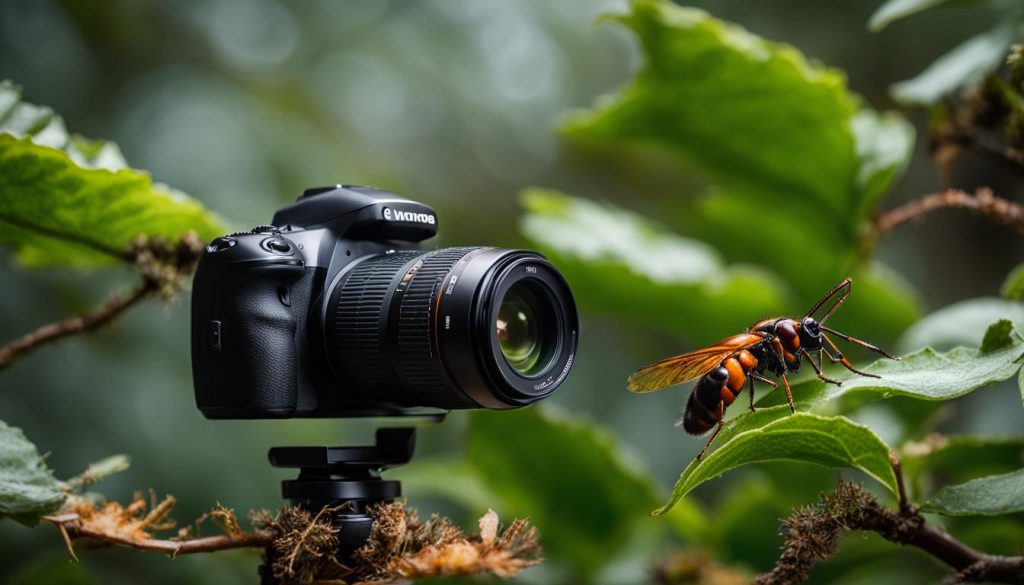
With the right equipment and tools, you can elevate your insect photography to the next level. The macro lens, remote shutter release, tripod, and understanding working distance are crucial to capturing the beauty and intricacies of insects.
Conclusion
Insect photography offers a captivating glimpse into the exquisite world of tiny creatures. By employing the right techniques and equipment, you can capture the enchanting beauty of insects through stunning macro photographs. Remember to approach these delicate creatures with respect, always opting for ethical techniques to ensure their well-being.
Understanding the best time and lighting conditions is crucial when photographing insects. Early mornings provide the ideal opportunity, as insects are often still asleep and the soft, diffused light enhances the intricate details of their delicate forms. Experiment with different insect subjects like dragonflies, butterflies, and bees to capture their unique textures and vibrant colors.
Investing in a high-quality macro lens is essential for achieving sharp and detailed insect photographs. The recommended focal length of at least 90mm provides adequate working distance, ensuring that you can capture stunning images without startling the insects. Consider using additional tools such as a remote shutter release and a tripod to enhance camera stability and achieve optimal results.
So, venture into the world of insect photography and immerse yourself in the wonders of macro imaging. With these essential tips and techniques at your disposal, you can unlock the magic of insects and immortalize their intricate beauty through your lens. Happy capturing!
FAQ
When is the best time to photograph insects?
The best time to photograph insects is in the early mornings when temperatures are low and the insects are still asleep. This allows for a longer window of time to capture images without disturbing them. The morning also provides ideal lighting conditions with soft and diffused light for capturing the intricate details of the insects.
How should I approach insects when photographing them?
It is important to approach insects with respect and care. Avoid freezing uncooperative insects to slow them down, as this can harm them. Instead, practice patience-based techniques and choose insects that are lethargic or in a cooled-down state in the early mornings.
What equipment do I need for insect photography?
To capture stunning insect photographs, investing in a macro lens is essential. A macro lens with a focal length of at least 90mm is recommended, as it provides sufficient working distance to avoid scaring off the insects. Additionally, teleconverters can be used to extend the focal length of a lens and isolate the insect from the background. Using a remote shutter release and utilizing a tripod are also essential for achieving sharp and detailed insect photographs.
What are the best insects to photograph?
Dragonflies, butterflies, and bees are popular insect subjects for photography due to their vibrant colors and intricate structures. However, there is a wide variety of insects that can be fascinating to photograph. It’s important to approach them ethically and choose insects that are in a calm and cooperative state.
How can I capture the beauty of insects with macro photography?
With the right techniques and equipment, you can capture the magic of insects with macro photography. Consider the best time and lighting conditions for insect photography, and experiment with different insect subjects. Remember to approach insects with respect and choose ethical techniques. Investing in a macro lens, using a remote shutter release, and utilizing a tripod are essential for achieving sharp and detailed insect photographs.

